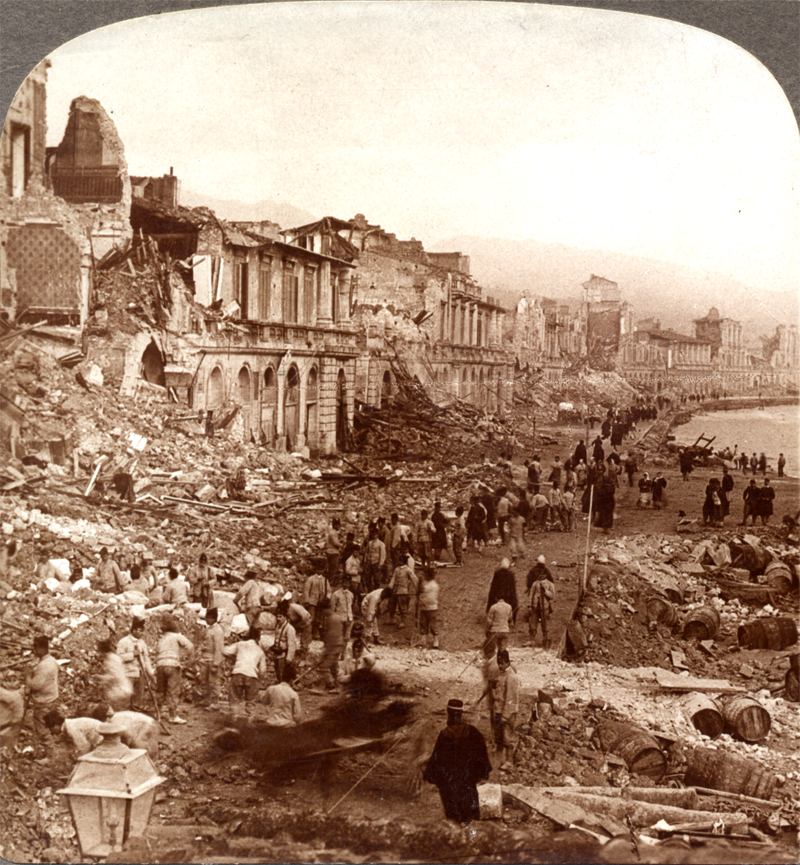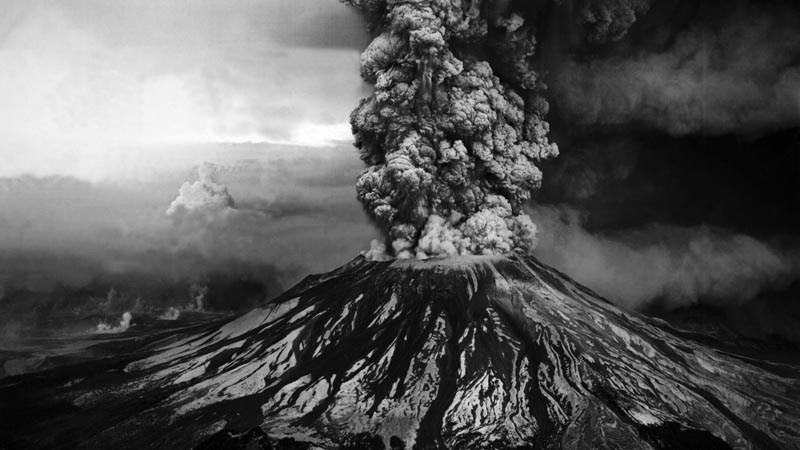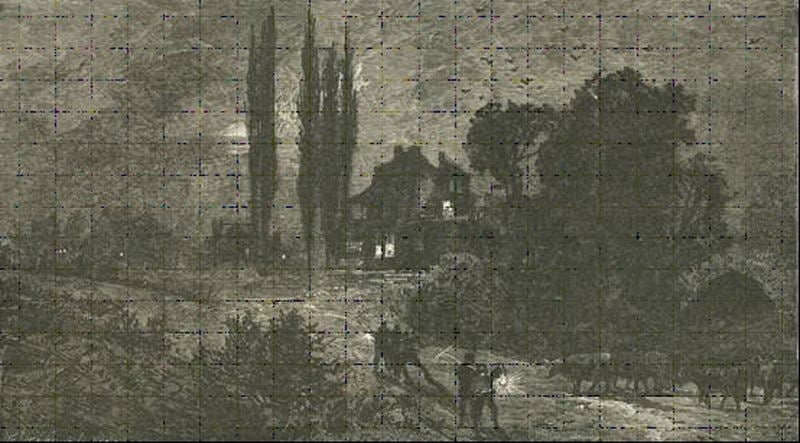
Forgotten Disasters: Messina Earthquake
In the dark, early hours of December 28th, 1908, a 7.5 magnitude earthquake struck Sicily and Calabria in southern Italy. The epicentre was near the Sicilian city of Messina, and the adjacent cities along the Ionian Sea suffered damages at the hands of a 39-foot tsunami. Messina alone would lose 70,000 people, proving an ominous vision of what so many cities across Europe would look like in the soon-to-come Great War.

A major earthquake in its own right, the damages were made all the worse by the cities’ total unpreparedness for it. The combination of heavy roofs and weak foundations buried whole families alive for days as rescue workers dug through the rubble for weeks. Crime grew rampant in the ensuing commotion, and soldiers sent in as relief eventually began shooting looters.
The earthquake is the most destructive in Europe’s history, and killed nearly 200,000 people.
Forgotten Disasters: Rocky Mountain Locust Swarm

Source: Kansas Historical Society
Many are familiar with the Ten Plagues of Egypt told of in the Book of Exodus, the eighth of which was a devastating swarm of locusts. Pharaoh is warned that the bugs “will cover the face of the ground so that it cannot be seen and devour what little you have left.” He is not told, however, that this would manifest itself thousands of years later in North America.

Source: Wyo File
In 1875, the residents of America’s flyover country bore witness to something much, much more terrifying than Pharaoh could have conceived. The Rocky Mountain locust is actually a two-inch flying grasshopper, and for the majority of history was rarely more than a nuisance to regional farmers. In the Spring of 1975, however, an estimated 3.5 trillion grasshoppers stretching almost 200,000 square miles devastated the western United States from the central Rocky Mountains almost to the northern Mississippi River.
Thousands of farmers dependent on their harvest to get them through the winter watched helplessly as the swarm — said to literally blacken the sky — rendered their verdant acres nothing more than barren deserts. The loss of the crops cost upwards of $15,000,000 — over $300 million adjusted for inflation.
Forgotten Disasters: Two Supervolcanoes Cause The Coldest Decade In Centuries

The decade from 1810 to 1819 is considered by climate scientists to be the coldest average decade since before the European discovery of America. It turns out that it was an unusually volcanically active time, as it was host to six massive volcanic eruptions in seven years.
The coldest year of the decade, 1816, is known to historians as the “Year without a Summer,” and is believed to have been triggered by the 1815 eruption of Indonesian volcano Mt. Tambora, which killed 88,000 people. Temperatures reached fatal lows, agriculture around the globe was paltry and caused prices for basic staples to soar, and thin fog now believed to be sulfuric aerosols persisted for months in hundreds of cities around the world.

However, the records show that the global climate first got unusually cold in 1810, two years before the next known volcanic event. Recently, climate scientists have discovered evidence that a previously unknown supervolcano in Greenland erupted in 1809 with about half the force of Tambora. Massive eruptions began occurring about once a year until culminating in the catastrophic Tambora eruption that would cool the earth for three more years.
Forgotten Disasters: Donora Smog

Source: The Boston Globe
Back before environmentalism was even a conceivable common cause, the small town of Donora, Pennsylvania fell under a deadly smog. While steel mill-stemmed metallurgical air pollution was common in Donora and the surrounding towns, it normally caused little distress to the townsfolk.
Due to an uncharacteristic cold front in the autumn of 1948, the pollution was trapped by a higher layer of warm air, turning the little town into a sauna of caustic gases that would last for five days until a Halloween rain cleared the air.
Twenty people died of asphyxiation in those first five days, and another thirty would die of complications in the weeks to follow. Hundreds of wild and domesticated animals would be reported killed, and over half of Donora’s population of 14,000 would be diagnosed with permanent heart and lung damage.
US Steel, who owned the plants, never accepted blame for the incident, and settled a damages case with 80 plaintiffs at a fraction of the demands. Awareness of pollution’s hazards, however, had finally hit home with many Americans, and ultimately led to the passing of the Clean Air Act and, some decades later, the creation of the Environmental Protection Agency.
Forgotten Disasters: New England’s Dark Day

Source: University Of Missouri
Not a disaster so much as a very strange day for a lot of people, May 19th, 1780 was overcast with such a thick smoke that people had to travel by candlelight at noon. In Boston, the darkness lasted nearly fourteen hours, not letting up until midnight.
For several days leading up to that bleak day in May, citizens had noted that the sun and moon both took on red hues and that wells and rivers assumed collections of soot. However, due to the ongoing war and widespread scientific illiteracy, explanations for the darkness were emotionally motivated at best.

It doesn’t take too much imagination to see why several states across the region interpreted the darkness as a religious omen. Quite a few New England states were founded by religious fundamentalists, and outside of serving as the opening stage of the American Revolution, New England is best known for the Salem witch trials. Said Abraham Davenport of the Connecticut legislature: “I am against adjournment.The day of judgment is either approaching, or it is not. If it is not, there is no cause for an adjournment; if it is, I choose to be found doing my duty. I wish therefore that candles may be brought.”
Shedding religious fervor for scientific fact, arboreal research suggests that particularly heavy forest fires in Ontario were blown toward the ocean, covering much of the St. Lawrence River and reaching as far south as New Jersey.





